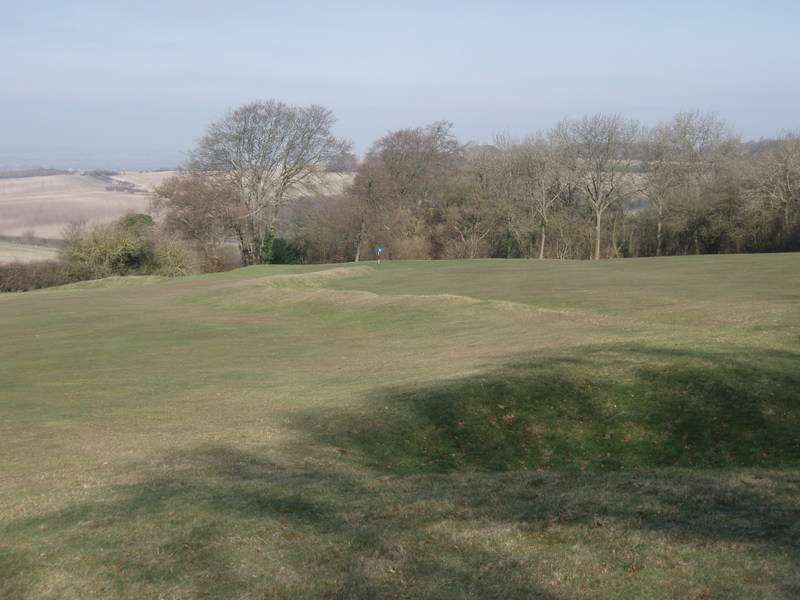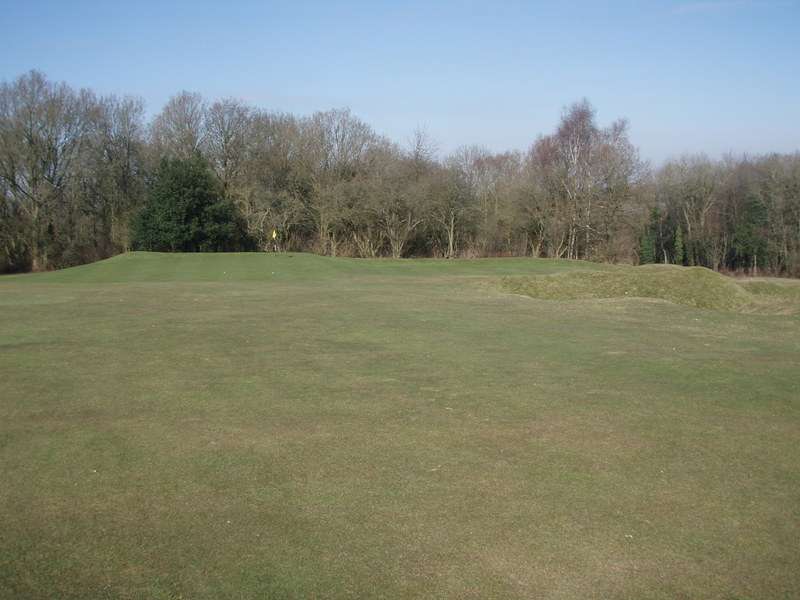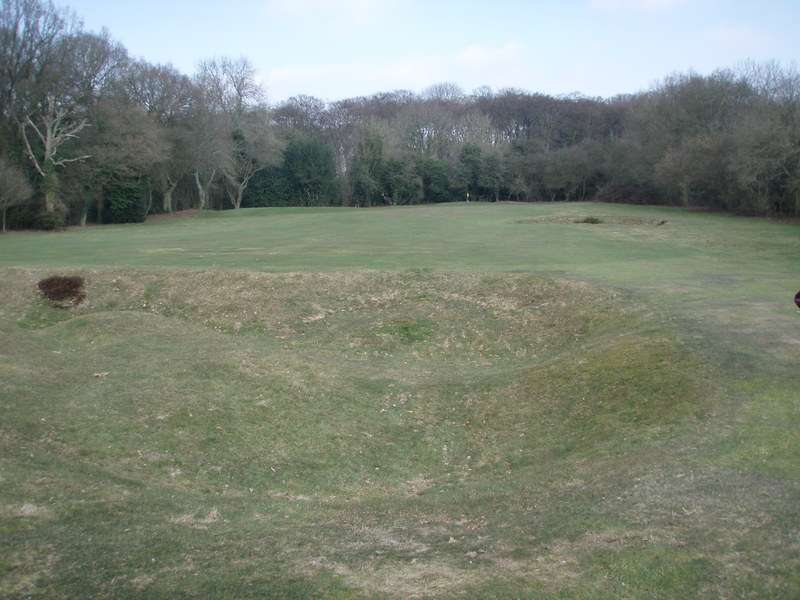The 2nd fairway is divided by a diagonal ridge that sets the day's tee-shot strategy in tandem with the pin position and begins a steady stream of unconventional hazards
A massive green on the 4th is split into two distinctive tiers separated by a slope you don't want to end up on the wrong side of if you fancy converting that GIR into a par
The 8th green is another massive putting surface, with a relatively flat bottom tier rising steeply to a back tier that is as undulating as it is narrow
The centreline driving hazard at the 13th combines long grass and uneven stances with a sprinkling of gorse, typical of the natural hazards found all the way around
Course name: Huntercombe
Location: Nuffield, Oxfordshire, England
Four Word Course Review: Masterpiece of dramatic subtlety
If there is one word that sums up Willie Park Jr's Huntercombe, it's "subtle".
That might seem at odds with the drama of a few of the greens or the amazing depth of some grass bunkers, but even in those bold features there's plenty that might not be apparent at first glance.
Take for example the 8th green, with a massive slope separating the top tier from the bottom. Obviously that presents a major obstacle if you're putting from one level to the other, but thanks to a centre-green tongue that extends further into the bottom tier than the slope either side of it, even a putt across the sedate platform is made maddening, with no real way to get the ball within five feet if the pin is cut near the bottom of the slope.
After many, many attempts to find a way to lag the putt close when crossing the slope, my host and I concluded the best strategy was to deliberately hit the first putt below the hole, immediately abandoning any hope - however slight - of making the putt. It's a rare golfer who would work that out before hitting his putt, and rarer still he who would accept that he should deliberately give the hole away on the first putt to maximise his chance of avoiding a three-putt.
The predominant use of grass bunkers (there are only 13 sand bunkers on the entire course, spread across just nine holes) also means subtle views from the tees and fairways that force you to focus closely in an effort to determine where you can and can't hit the ball - as opposed to the "road map of bunkers" (not my creation, that term, but it's a good one) that most courses give you to plot your path to the green.
The other brilliant strength of low-maintenance grass bunkers is that they present tougher recovery than a sand bunker for the good player, while higher handicappers generally find them easier to advance from than a sand trap.
The greens as a set are some of the best I have seen anywhere, with a great mix of steady slopes, flattish tiers separated by almost vertical slopes and dramatic internal movement.
Within the first four holes the brilliance and variety of the greens is presented to you: the 1st green has a wonderful centre ridge that means placing your first swing of the day (it's a par three) on the right line or a three-putt becomes more than a possibility, before the 2nd calls for a downhill approach to a green that slopes away from you. The 3rd then mixes a significant right-to-left tilt with brilliant internal movement and the 4th features two massive tiers following the slope of the land - high on the left, low on the right.
Finally, Huntercombe is worth visiting also for its centreline hazards, which are a feature of the 2nd, 5th, 6th, 10th, 12th and 16th. Crucially, not only does the placement vary between driving zone and greenfront, but the nature of the hazard also changes: diagonal fairway ridge, tree in the fairway, greenfront bunkers and finally the deep grass bunker in the 16th fairway. As a result there is never a feeling of repetition.
It's centreline hazards that elevate the two par fives to their exceptional standard, with both holes among the best three-shotters I have played in England, where such holes have tended to be - with few exceptions - among the weaker holes of any course.
Of the one-shot holes, there isn't the brilliance of Swinley Forest, The Addington or Rye, but Huntercombe doesn't possess the terrain to create the drama of their par threes. Instead it's great variety that makes it a good set, especially the tough 7th and 10th holes, which both demand a pin-point long iron.
Huntercombe doesn't have the eye-candy of its rivals further south in the Surrey and Berkshire heathbelt, but when the aesthetics are stripped away and it's just you and the golf course, it more than holds its own against more fancied layouts thanks to Park's willingness to be brave and bold with the greens and hazards, while still putting enough devil in the detail that attentive repeat play reveals new ways to save shots.
Saturday, March 06, 2010
Subscribe to:
Post Comments (Atom)




No comments:
Post a Comment